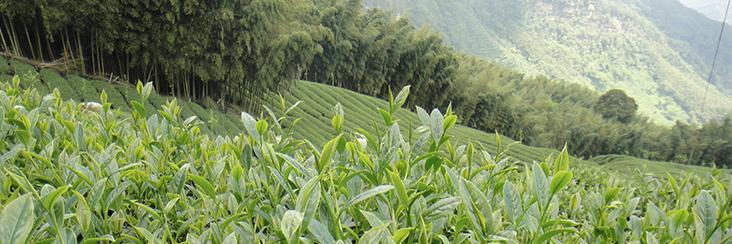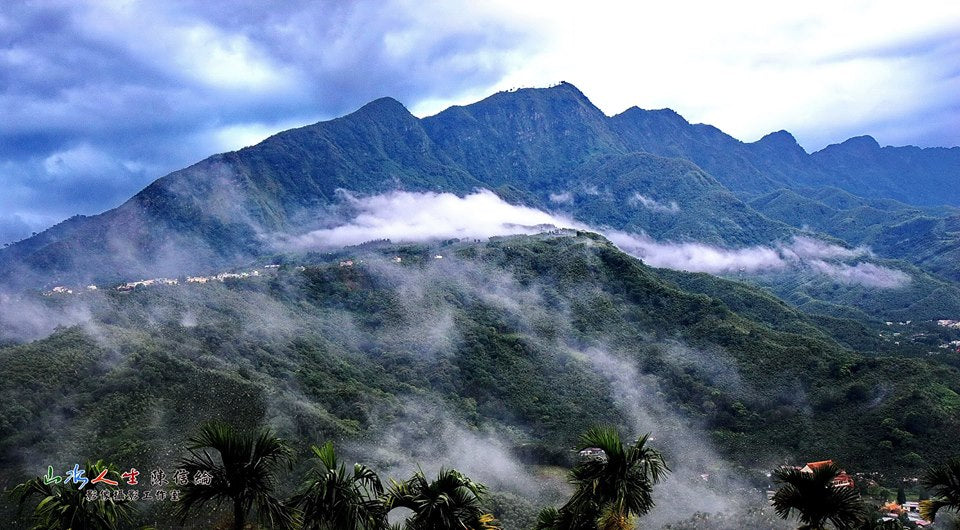
Why We Chose A Lugu Farmers' Association Award-Winning Tea For Our Premier Batch Of The Eco-Cha Tea Club
Eco-Cha is only able to procure this tea because of our friendship with one of the top players in the competition industry here in Taiwan. He has agreed to provide us with the remaining amounts of tea from batches that win awards.
The standard of quality the Lugu Farmers' Association sets for their competition is in a class of Oolong that draws our attention due to a synthesis of two general categories: Traditionally cured, heavily oxidized and heavily roasted Dong Ding Oolong combined with a new trend of sufficiently oxidized, lightly roasted High Mountain Oolong. In the final analysis, it is a relatively light Dong Ding Oolong Tea, especially when put in perspective of the local tradition. We like it a lot, because it's interesting, soothing and stimulating all at once. Why else do we drink tea?

A view of Phoenix Mountain and the village in the foreground where Dong Ding Oolong began. (Photo courtesy of 陳信綸.)
To give a perspective on this tea in the context of the competition that it ranked within the top 16% of over 6300 entries, We'll share our understanding of the basic standard by which the teas are judged. Like other contemporary evolutions of traditional products of regional origin such as wine, cheese, beer, cider, etc, there is an integration of the essential aspects of traditional hands-on methods with modern, cross-referenced research of tea production.
So basically, the current standard of quality results from an intentional combining of two distinct tea styles that creates the potential for an Oolong that embodies purity of composition (clean, unmuddled flavor and aroma) while possessing the hearty character (bold, complex, roasted flavor) of a traditional local specialty. This standard is determined by Taiwan's leading professionals whose jobs are about promoting Taiwan's specialty teas and improving the quality and value of these products. These nationally qualified tea judges are employed by the Department of Agriculture's Tea Research and Extension Station, who are unbiased about tea types from a particular region. They are specialists in optimizing the quality of all Taiwanese specialty tea types.
Beginning in 1976, the Lugu Farmers’ Association developed the Dong Ding Oolong Tea Competition in an effort to preserve the value and quality of its local specialty product (Lin Hsien-tang, 2004). This event has developed over the last forty years to become the world’s largest and most prestigious Oolong Tea competition, with prize-winning teas demanding the highest price of any Oolong Tea in the world. It is arguably the most impactful method of preserving the value and quality of a Traditional Oolong Tea that has been implemented in the history of the Taiwan tea industry. With over 6000 entries per bi-annual competition, and first place prize winning tea currently attaining around NT$250,000 per jin (600g), it has brought a local traditional specialty product to unprecedented heights of value and quality. (Excerpted from Andy Kincart's MBA thesis.)
So here are the specs, for you tea geeks, on how the tea entries in the competition are judged:
The assessment of the quality of the tea is based on the appearance (shape, color, and luster) of the tea leaves before brewing (20%), the quality and purity of the aroma from the brewed tea leaves (30%), the flavor profile (40%), and the color and luster of the brewed tea (10%). (extracted from the English version of the Lugu F.A. brochure we just revised this week, after our second edition published ten years ago.)

